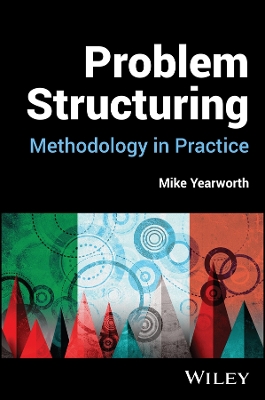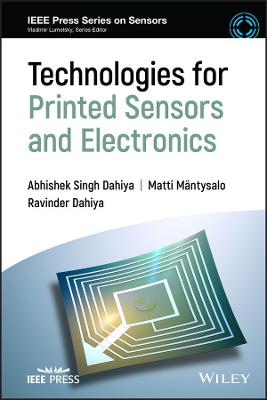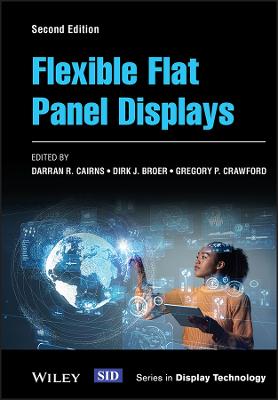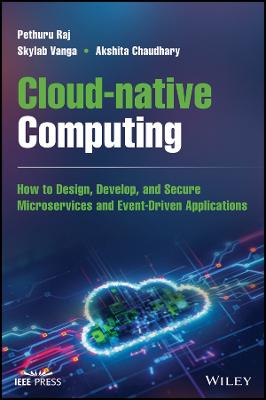Joint Source-Channel Coding
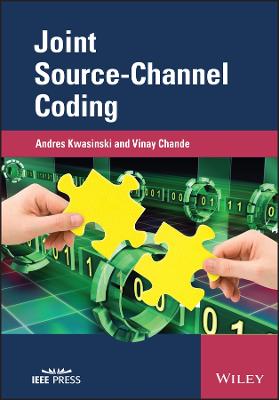 -15%
portes grátis
-15%
portes grátis
Joint Source-Channel Coding
Kwasinski, Andres; Chande, Vinay
John Wiley & Sons Inc
12/2022
400
Dura
Inglês
9781119978527
15 a 20 dias
Descrição não disponível.
Preface xi
1 Introduction and Background 1
1.1 Simplified Model for a Communication System 2
1.2 Entropy and Information 3
1.3 Introduction to Source Coding 6
1.3.1 Sampling and Quantization of Signals 6
1.3.2 Source Coding of Quantized Signals 9
1.3.3 Distortion and Rate-distortion Theory 13
1.4 Channels, Channel Coding, and Capacity 17
1.4.1 Channel Models 17
1.4.2 Wireless Channels 19
1.4.3 Channel Coding and Channel Capacity 23
1.5 Layered Model for a Communication System 26
1.6 Distortion, Quality of Service, and Quality of Experience 30
1.6.1 Objective Measurements of Distortion or Quality 31
1.6.2 Subjective and Perceptually Based Measurements of Distortion or Quality 32
1.7 Shannon's Separation Principle and Joint Source-Channel Coding 36
1.8 Major Classes of Joint Source-Channel Coding Techniques 40
References 42
2 Source Coding and Signal Compression 43
2.1 Types of Sources 43
2.2 Lossless Compression 46
2.2.1 Entropy Coding 47
2.2.2 Predictive Coding 52
2.3 Lossy Compression 54
2.3.1 Quantization 54
2.3.2 Differential Coding 62
2.3.3 Transform Coding 63
2.3.4 Subband and Wavelet Coding 65
2.4 Embedded and Layered Coding 68
2.5 Coding of Practical Sources 71
2.5.1 Image Coding - JPEG 71
2.5.2 Embedded Image Coding - SPIHT 75
2.5.3 Video Coding 78
2.5.4 Speech Coding 83
References 86
3 Channel Coding 87
3.1 Linear Block Codes 87
3.1.1 Binary Linear Block Codes 90
3.1.2 Generator Matrix, Parity-Check Matrix, and Syndrome Testing 91
3.1.3 Common Linear Block Codes 92
3.1.4 Error and Erasure Correction with Block Codes 95
3.2 Convolutional Codes 97
3.2.1 Code Characterization: State and Trellis Diagrams 98
3.2.2 Maximum Likelihood (ML) Decoding 100
3.2.3 The Viterbi Algorithm 101
3.2.4 Error Correction Performance 104
3.3 Modified Linear Codes (Puncturing, Shortening, Expurgating, Extending, Augmenting, and Lengthening) 105
3.4 Rate-Compatible Channel Codes 105
References 110
4 Concatenated Joint Source-Channel Coding 111
4.1 Concatenated JSCC Bit Rate Allocation 111
4.2 Performance Characterization 119
4.2.1 Practical Source and Channel Codecs 119
4.3 Application Cases 131
References 133
5 Unequal Error Protection Source-Channel Coding 135
5.1 Effect of Channel Errors on Source Encoded Data 135
5.2 Priority Encoding Transmission Schemes for Unequal Loss Protection 142
5.3 Dynamic Programming Algorithm for Optimal UEP 147
5.4 Unequal Error Protection Using Digital Fountain Codes 163
References 171
6 Source-Channel Coding with Feedback 173
6.1 Joint Source-Channel Coding Formulation for a System with ACK/NACK Feedback 173
6.1.1 Performance Measurement 175
6.1.2 Classification of the Transmitters 176
6.1.3 Decoder Structure and Design 177
6.2 Packet Combining for Joint Source-Channel ARQ over Memoryless Channels 179
6.2.1 Decoder Design Problem 179
6.3 Pruned Tree-Structured Quantization in Noise and Feedback 193
6.3.1 Pruned Tree-Structured Vector Quantizers 194
6.3.2 Progressive Transmission with ACK/NACK Feedback of TSVQ-Encoded Sources 195
6.3.3 Progressive Transmission and Receiver-Driven Rate Control 204
6.4 Delay-Constrained JSCC Using Incremental Redundancy with Feedback 205
6.4.1 System Description 205
6.4.2 Optimal Source and Channel Rate Allocations Design 208
6.4.3 Performance 213
References 220
7 Quantizers Designed for Noisy Channels 223
7.1 Channel-Optimized Quantizers 223
7.2 Scalar Quantizer Design 227
7.3 Vector Quantizer Design 234
7.4 Channel Mismatch Considerations 245
7.5 Structured Vector Quantizers 249
References 255
8 Error-Resilient Source Coding 257
8.1 Multiple-Description Coding 257
8.2 Error-Resilient Coded Bit Streams 273
8.2.1 Robust Entropy Coding 273
8.2.2 Predictive Coding Mode Selection 279
References 281
9 Analog and Hybrid Digital-Analog JSCC Techniques 283
9.1 Analog Joint Source-Channel Coding Techniques 283
9.1.1 Analog Joint Source-Channel Coding in Vector Spaces 283
9.1.2 Analog Joint Source-Channel Coding Through Artificial Neural Networks 293
9.2 Hybrid Digital-Analog JSCC Techniques 297
References 302
10 Joint Source-Channel Decoding 305
10.1 Source-Controlled Channel Decoding 305
10.2 Exploiting Residual Redundancy at the Decoder 314
10.2.1 The Soft Output Viterbi Algorithm (SOVA) 315
10.2.2 Exploiting Residual Redundancy to Estimate A Priori Information 318
10.3 Iterative Source-Channel Decoding 323
10.3.1 The Channel Coding Optimal Estimation Algorithm 328
10.3.2 Channel Coding Optimal Estimation Applied to JSCD 330
References 333
11 Recent Applications and Emerging Designs in Source-Channel Coding 335
11.1 Source-Channel Coding for Wireless Sensor Networks 335
11.2 Extending Network Capacity Through JSCC 343
11.2.1 Video Telephony Calls as Application Example 345
11.2.2 CDMA Statistical Multiplexing Resource Allocation and Flow Control 347
11.2.3 Overhead from Communicating Rate-Distortion Data 354
11.2.4 Analysis for Dynamic Call Traffic and Admission Control 356
11.2.5 Performance Results 358
11.3 Source-Channel Coding and Cognitive Radios 364
11.4 Design of JSCC Schemes Based on Artificial Neural Networks 374
References 378
Index 381
1 Introduction and Background 1
1.1 Simplified Model for a Communication System 2
1.2 Entropy and Information 3
1.3 Introduction to Source Coding 6
1.3.1 Sampling and Quantization of Signals 6
1.3.2 Source Coding of Quantized Signals 9
1.3.3 Distortion and Rate-distortion Theory 13
1.4 Channels, Channel Coding, and Capacity 17
1.4.1 Channel Models 17
1.4.2 Wireless Channels 19
1.4.3 Channel Coding and Channel Capacity 23
1.5 Layered Model for a Communication System 26
1.6 Distortion, Quality of Service, and Quality of Experience 30
1.6.1 Objective Measurements of Distortion or Quality 31
1.6.2 Subjective and Perceptually Based Measurements of Distortion or Quality 32
1.7 Shannon's Separation Principle and Joint Source-Channel Coding 36
1.8 Major Classes of Joint Source-Channel Coding Techniques 40
References 42
2 Source Coding and Signal Compression 43
2.1 Types of Sources 43
2.2 Lossless Compression 46
2.2.1 Entropy Coding 47
2.2.2 Predictive Coding 52
2.3 Lossy Compression 54
2.3.1 Quantization 54
2.3.2 Differential Coding 62
2.3.3 Transform Coding 63
2.3.4 Subband and Wavelet Coding 65
2.4 Embedded and Layered Coding 68
2.5 Coding of Practical Sources 71
2.5.1 Image Coding - JPEG 71
2.5.2 Embedded Image Coding - SPIHT 75
2.5.3 Video Coding 78
2.5.4 Speech Coding 83
References 86
3 Channel Coding 87
3.1 Linear Block Codes 87
3.1.1 Binary Linear Block Codes 90
3.1.2 Generator Matrix, Parity-Check Matrix, and Syndrome Testing 91
3.1.3 Common Linear Block Codes 92
3.1.4 Error and Erasure Correction with Block Codes 95
3.2 Convolutional Codes 97
3.2.1 Code Characterization: State and Trellis Diagrams 98
3.2.2 Maximum Likelihood (ML) Decoding 100
3.2.3 The Viterbi Algorithm 101
3.2.4 Error Correction Performance 104
3.3 Modified Linear Codes (Puncturing, Shortening, Expurgating, Extending, Augmenting, and Lengthening) 105
3.4 Rate-Compatible Channel Codes 105
References 110
4 Concatenated Joint Source-Channel Coding 111
4.1 Concatenated JSCC Bit Rate Allocation 111
4.2 Performance Characterization 119
4.2.1 Practical Source and Channel Codecs 119
4.3 Application Cases 131
References 133
5 Unequal Error Protection Source-Channel Coding 135
5.1 Effect of Channel Errors on Source Encoded Data 135
5.2 Priority Encoding Transmission Schemes for Unequal Loss Protection 142
5.3 Dynamic Programming Algorithm for Optimal UEP 147
5.4 Unequal Error Protection Using Digital Fountain Codes 163
References 171
6 Source-Channel Coding with Feedback 173
6.1 Joint Source-Channel Coding Formulation for a System with ACK/NACK Feedback 173
6.1.1 Performance Measurement 175
6.1.2 Classification of the Transmitters 176
6.1.3 Decoder Structure and Design 177
6.2 Packet Combining for Joint Source-Channel ARQ over Memoryless Channels 179
6.2.1 Decoder Design Problem 179
6.3 Pruned Tree-Structured Quantization in Noise and Feedback 193
6.3.1 Pruned Tree-Structured Vector Quantizers 194
6.3.2 Progressive Transmission with ACK/NACK Feedback of TSVQ-Encoded Sources 195
6.3.3 Progressive Transmission and Receiver-Driven Rate Control 204
6.4 Delay-Constrained JSCC Using Incremental Redundancy with Feedback 205
6.4.1 System Description 205
6.4.2 Optimal Source and Channel Rate Allocations Design 208
6.4.3 Performance 213
References 220
7 Quantizers Designed for Noisy Channels 223
7.1 Channel-Optimized Quantizers 223
7.2 Scalar Quantizer Design 227
7.3 Vector Quantizer Design 234
7.4 Channel Mismatch Considerations 245
7.5 Structured Vector Quantizers 249
References 255
8 Error-Resilient Source Coding 257
8.1 Multiple-Description Coding 257
8.2 Error-Resilient Coded Bit Streams 273
8.2.1 Robust Entropy Coding 273
8.2.2 Predictive Coding Mode Selection 279
References 281
9 Analog and Hybrid Digital-Analog JSCC Techniques 283
9.1 Analog Joint Source-Channel Coding Techniques 283
9.1.1 Analog Joint Source-Channel Coding in Vector Spaces 283
9.1.2 Analog Joint Source-Channel Coding Through Artificial Neural Networks 293
9.2 Hybrid Digital-Analog JSCC Techniques 297
References 302
10 Joint Source-Channel Decoding 305
10.1 Source-Controlled Channel Decoding 305
10.2 Exploiting Residual Redundancy at the Decoder 314
10.2.1 The Soft Output Viterbi Algorithm (SOVA) 315
10.2.2 Exploiting Residual Redundancy to Estimate A Priori Information 318
10.3 Iterative Source-Channel Decoding 323
10.3.1 The Channel Coding Optimal Estimation Algorithm 328
10.3.2 Channel Coding Optimal Estimation Applied to JSCD 330
References 333
11 Recent Applications and Emerging Designs in Source-Channel Coding 335
11.1 Source-Channel Coding for Wireless Sensor Networks 335
11.2 Extending Network Capacity Through JSCC 343
11.2.1 Video Telephony Calls as Application Example 345
11.2.2 CDMA Statistical Multiplexing Resource Allocation and Flow Control 347
11.2.3 Overhead from Communicating Rate-Distortion Data 354
11.2.4 Analysis for Dynamic Call Traffic and Admission Control 356
11.2.5 Performance Results 358
11.3 Source-Channel Coding and Cognitive Radios 364
11.4 Design of JSCC Schemes Based on Artificial Neural Networks 374
References 378
Index 381
Este título pertence ao(s) assunto(s) indicados(s). Para ver outros títulos clique no assunto desejado.
Joint Source-Channel Coding; Andres Kwasinski; Vinay Chande; JSCC; digital and wireless communication systems and networks; coding and decoding algorithms
Preface xi
1 Introduction and Background 1
1.1 Simplified Model for a Communication System 2
1.2 Entropy and Information 3
1.3 Introduction to Source Coding 6
1.3.1 Sampling and Quantization of Signals 6
1.3.2 Source Coding of Quantized Signals 9
1.3.3 Distortion and Rate-distortion Theory 13
1.4 Channels, Channel Coding, and Capacity 17
1.4.1 Channel Models 17
1.4.2 Wireless Channels 19
1.4.3 Channel Coding and Channel Capacity 23
1.5 Layered Model for a Communication System 26
1.6 Distortion, Quality of Service, and Quality of Experience 30
1.6.1 Objective Measurements of Distortion or Quality 31
1.6.2 Subjective and Perceptually Based Measurements of Distortion or Quality 32
1.7 Shannon's Separation Principle and Joint Source-Channel Coding 36
1.8 Major Classes of Joint Source-Channel Coding Techniques 40
References 42
2 Source Coding and Signal Compression 43
2.1 Types of Sources 43
2.2 Lossless Compression 46
2.2.1 Entropy Coding 47
2.2.2 Predictive Coding 52
2.3 Lossy Compression 54
2.3.1 Quantization 54
2.3.2 Differential Coding 62
2.3.3 Transform Coding 63
2.3.4 Subband and Wavelet Coding 65
2.4 Embedded and Layered Coding 68
2.5 Coding of Practical Sources 71
2.5.1 Image Coding - JPEG 71
2.5.2 Embedded Image Coding - SPIHT 75
2.5.3 Video Coding 78
2.5.4 Speech Coding 83
References 86
3 Channel Coding 87
3.1 Linear Block Codes 87
3.1.1 Binary Linear Block Codes 90
3.1.2 Generator Matrix, Parity-Check Matrix, and Syndrome Testing 91
3.1.3 Common Linear Block Codes 92
3.1.4 Error and Erasure Correction with Block Codes 95
3.2 Convolutional Codes 97
3.2.1 Code Characterization: State and Trellis Diagrams 98
3.2.2 Maximum Likelihood (ML) Decoding 100
3.2.3 The Viterbi Algorithm 101
3.2.4 Error Correction Performance 104
3.3 Modified Linear Codes (Puncturing, Shortening, Expurgating, Extending, Augmenting, and Lengthening) 105
3.4 Rate-Compatible Channel Codes 105
References 110
4 Concatenated Joint Source-Channel Coding 111
4.1 Concatenated JSCC Bit Rate Allocation 111
4.2 Performance Characterization 119
4.2.1 Practical Source and Channel Codecs 119
4.3 Application Cases 131
References 133
5 Unequal Error Protection Source-Channel Coding 135
5.1 Effect of Channel Errors on Source Encoded Data 135
5.2 Priority Encoding Transmission Schemes for Unequal Loss Protection 142
5.3 Dynamic Programming Algorithm for Optimal UEP 147
5.4 Unequal Error Protection Using Digital Fountain Codes 163
References 171
6 Source-Channel Coding with Feedback 173
6.1 Joint Source-Channel Coding Formulation for a System with ACK/NACK Feedback 173
6.1.1 Performance Measurement 175
6.1.2 Classification of the Transmitters 176
6.1.3 Decoder Structure and Design 177
6.2 Packet Combining for Joint Source-Channel ARQ over Memoryless Channels 179
6.2.1 Decoder Design Problem 179
6.3 Pruned Tree-Structured Quantization in Noise and Feedback 193
6.3.1 Pruned Tree-Structured Vector Quantizers 194
6.3.2 Progressive Transmission with ACK/NACK Feedback of TSVQ-Encoded Sources 195
6.3.3 Progressive Transmission and Receiver-Driven Rate Control 204
6.4 Delay-Constrained JSCC Using Incremental Redundancy with Feedback 205
6.4.1 System Description 205
6.4.2 Optimal Source and Channel Rate Allocations Design 208
6.4.3 Performance 213
References 220
7 Quantizers Designed for Noisy Channels 223
7.1 Channel-Optimized Quantizers 223
7.2 Scalar Quantizer Design 227
7.3 Vector Quantizer Design 234
7.4 Channel Mismatch Considerations 245
7.5 Structured Vector Quantizers 249
References 255
8 Error-Resilient Source Coding 257
8.1 Multiple-Description Coding 257
8.2 Error-Resilient Coded Bit Streams 273
8.2.1 Robust Entropy Coding 273
8.2.2 Predictive Coding Mode Selection 279
References 281
9 Analog and Hybrid Digital-Analog JSCC Techniques 283
9.1 Analog Joint Source-Channel Coding Techniques 283
9.1.1 Analog Joint Source-Channel Coding in Vector Spaces 283
9.1.2 Analog Joint Source-Channel Coding Through Artificial Neural Networks 293
9.2 Hybrid Digital-Analog JSCC Techniques 297
References 302
10 Joint Source-Channel Decoding 305
10.1 Source-Controlled Channel Decoding 305
10.2 Exploiting Residual Redundancy at the Decoder 314
10.2.1 The Soft Output Viterbi Algorithm (SOVA) 315
10.2.2 Exploiting Residual Redundancy to Estimate A Priori Information 318
10.3 Iterative Source-Channel Decoding 323
10.3.1 The Channel Coding Optimal Estimation Algorithm 328
10.3.2 Channel Coding Optimal Estimation Applied to JSCD 330
References 333
11 Recent Applications and Emerging Designs in Source-Channel Coding 335
11.1 Source-Channel Coding for Wireless Sensor Networks 335
11.2 Extending Network Capacity Through JSCC 343
11.2.1 Video Telephony Calls as Application Example 345
11.2.2 CDMA Statistical Multiplexing Resource Allocation and Flow Control 347
11.2.3 Overhead from Communicating Rate-Distortion Data 354
11.2.4 Analysis for Dynamic Call Traffic and Admission Control 356
11.2.5 Performance Results 358
11.3 Source-Channel Coding and Cognitive Radios 364
11.4 Design of JSCC Schemes Based on Artificial Neural Networks 374
References 378
Index 381
1 Introduction and Background 1
1.1 Simplified Model for a Communication System 2
1.2 Entropy and Information 3
1.3 Introduction to Source Coding 6
1.3.1 Sampling and Quantization of Signals 6
1.3.2 Source Coding of Quantized Signals 9
1.3.3 Distortion and Rate-distortion Theory 13
1.4 Channels, Channel Coding, and Capacity 17
1.4.1 Channel Models 17
1.4.2 Wireless Channels 19
1.4.3 Channel Coding and Channel Capacity 23
1.5 Layered Model for a Communication System 26
1.6 Distortion, Quality of Service, and Quality of Experience 30
1.6.1 Objective Measurements of Distortion or Quality 31
1.6.2 Subjective and Perceptually Based Measurements of Distortion or Quality 32
1.7 Shannon's Separation Principle and Joint Source-Channel Coding 36
1.8 Major Classes of Joint Source-Channel Coding Techniques 40
References 42
2 Source Coding and Signal Compression 43
2.1 Types of Sources 43
2.2 Lossless Compression 46
2.2.1 Entropy Coding 47
2.2.2 Predictive Coding 52
2.3 Lossy Compression 54
2.3.1 Quantization 54
2.3.2 Differential Coding 62
2.3.3 Transform Coding 63
2.3.4 Subband and Wavelet Coding 65
2.4 Embedded and Layered Coding 68
2.5 Coding of Practical Sources 71
2.5.1 Image Coding - JPEG 71
2.5.2 Embedded Image Coding - SPIHT 75
2.5.3 Video Coding 78
2.5.4 Speech Coding 83
References 86
3 Channel Coding 87
3.1 Linear Block Codes 87
3.1.1 Binary Linear Block Codes 90
3.1.2 Generator Matrix, Parity-Check Matrix, and Syndrome Testing 91
3.1.3 Common Linear Block Codes 92
3.1.4 Error and Erasure Correction with Block Codes 95
3.2 Convolutional Codes 97
3.2.1 Code Characterization: State and Trellis Diagrams 98
3.2.2 Maximum Likelihood (ML) Decoding 100
3.2.3 The Viterbi Algorithm 101
3.2.4 Error Correction Performance 104
3.3 Modified Linear Codes (Puncturing, Shortening, Expurgating, Extending, Augmenting, and Lengthening) 105
3.4 Rate-Compatible Channel Codes 105
References 110
4 Concatenated Joint Source-Channel Coding 111
4.1 Concatenated JSCC Bit Rate Allocation 111
4.2 Performance Characterization 119
4.2.1 Practical Source and Channel Codecs 119
4.3 Application Cases 131
References 133
5 Unequal Error Protection Source-Channel Coding 135
5.1 Effect of Channel Errors on Source Encoded Data 135
5.2 Priority Encoding Transmission Schemes for Unequal Loss Protection 142
5.3 Dynamic Programming Algorithm for Optimal UEP 147
5.4 Unequal Error Protection Using Digital Fountain Codes 163
References 171
6 Source-Channel Coding with Feedback 173
6.1 Joint Source-Channel Coding Formulation for a System with ACK/NACK Feedback 173
6.1.1 Performance Measurement 175
6.1.2 Classification of the Transmitters 176
6.1.3 Decoder Structure and Design 177
6.2 Packet Combining for Joint Source-Channel ARQ over Memoryless Channels 179
6.2.1 Decoder Design Problem 179
6.3 Pruned Tree-Structured Quantization in Noise and Feedback 193
6.3.1 Pruned Tree-Structured Vector Quantizers 194
6.3.2 Progressive Transmission with ACK/NACK Feedback of TSVQ-Encoded Sources 195
6.3.3 Progressive Transmission and Receiver-Driven Rate Control 204
6.4 Delay-Constrained JSCC Using Incremental Redundancy with Feedback 205
6.4.1 System Description 205
6.4.2 Optimal Source and Channel Rate Allocations Design 208
6.4.3 Performance 213
References 220
7 Quantizers Designed for Noisy Channels 223
7.1 Channel-Optimized Quantizers 223
7.2 Scalar Quantizer Design 227
7.3 Vector Quantizer Design 234
7.4 Channel Mismatch Considerations 245
7.5 Structured Vector Quantizers 249
References 255
8 Error-Resilient Source Coding 257
8.1 Multiple-Description Coding 257
8.2 Error-Resilient Coded Bit Streams 273
8.2.1 Robust Entropy Coding 273
8.2.2 Predictive Coding Mode Selection 279
References 281
9 Analog and Hybrid Digital-Analog JSCC Techniques 283
9.1 Analog Joint Source-Channel Coding Techniques 283
9.1.1 Analog Joint Source-Channel Coding in Vector Spaces 283
9.1.2 Analog Joint Source-Channel Coding Through Artificial Neural Networks 293
9.2 Hybrid Digital-Analog JSCC Techniques 297
References 302
10 Joint Source-Channel Decoding 305
10.1 Source-Controlled Channel Decoding 305
10.2 Exploiting Residual Redundancy at the Decoder 314
10.2.1 The Soft Output Viterbi Algorithm (SOVA) 315
10.2.2 Exploiting Residual Redundancy to Estimate A Priori Information 318
10.3 Iterative Source-Channel Decoding 323
10.3.1 The Channel Coding Optimal Estimation Algorithm 328
10.3.2 Channel Coding Optimal Estimation Applied to JSCD 330
References 333
11 Recent Applications and Emerging Designs in Source-Channel Coding 335
11.1 Source-Channel Coding for Wireless Sensor Networks 335
11.2 Extending Network Capacity Through JSCC 343
11.2.1 Video Telephony Calls as Application Example 345
11.2.2 CDMA Statistical Multiplexing Resource Allocation and Flow Control 347
11.2.3 Overhead from Communicating Rate-Distortion Data 354
11.2.4 Analysis for Dynamic Call Traffic and Admission Control 356
11.2.5 Performance Results 358
11.3 Source-Channel Coding and Cognitive Radios 364
11.4 Design of JSCC Schemes Based on Artificial Neural Networks 374
References 378
Index 381
Este título pertence ao(s) assunto(s) indicados(s). Para ver outros títulos clique no assunto desejado.

